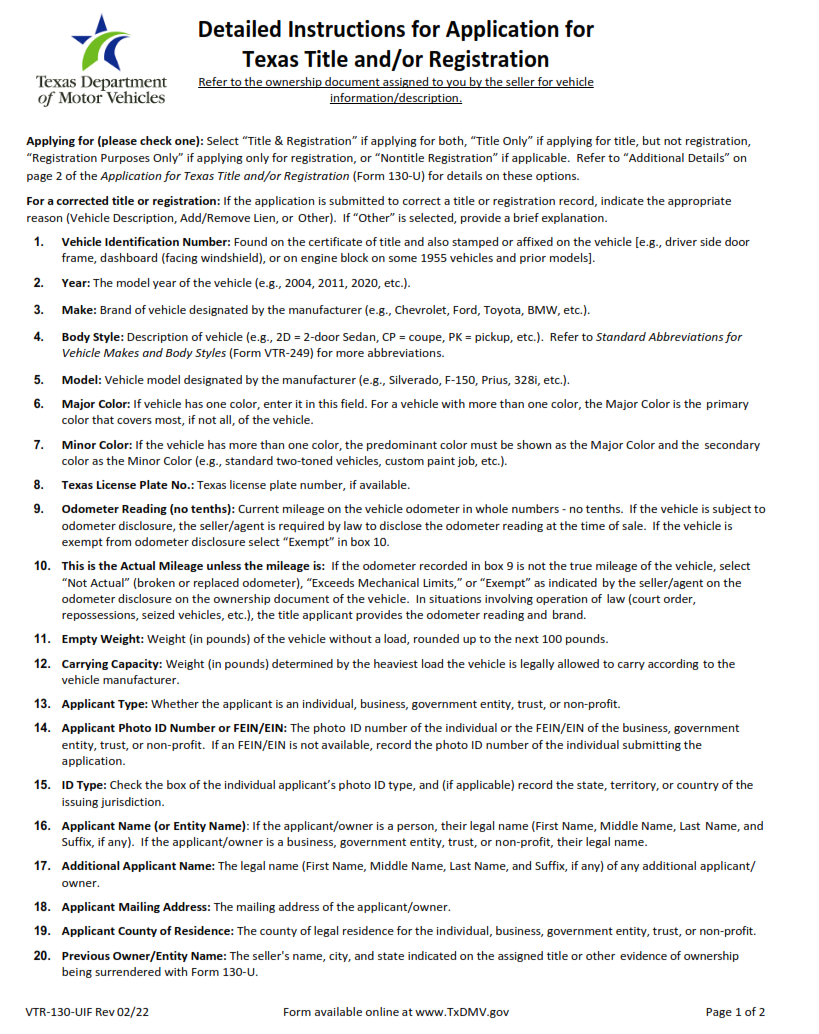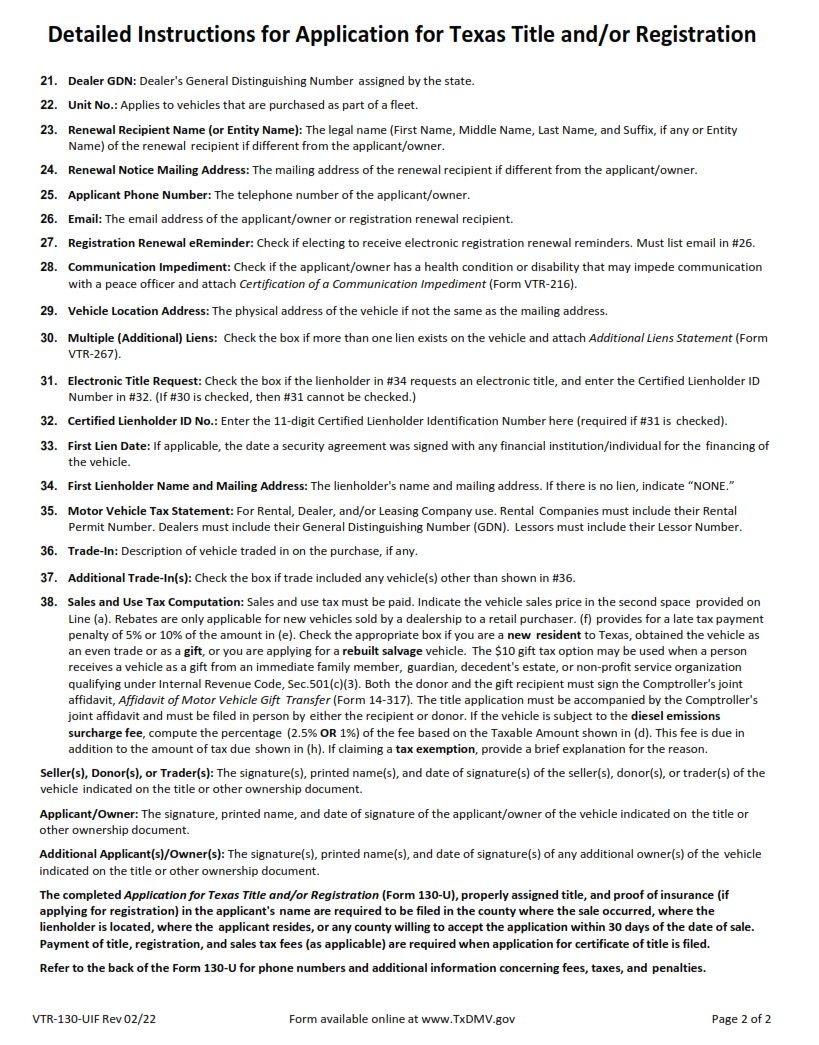ORIGINFORMSTUDIO.COM – VTR-130-UIF – Detailed Instructions For Application For Texas Title and/or Registration – Have you recently purchased a vehicle in the state of Texas and are unsure of what steps to take next? The VTR-130-UIF is an application form that must be completed in order to obtain a title and/or registration for your vehicle. This article will provide you with a detailed guide to filling out the VTR-130-UIF form correctly. You’ll learn what information should be included, which documents are required, and how to submit the form properly.
Download VTR-130-UIF – Detailed Instructions For Application For Texas Title and/or Registration
| Form Number | VTR-130-UIF |
| Form Title | Detailed Instructions For Application For Texas Title and/or Registration |
| File Size | 355 MB |
| Form By | Texas DMV Form |
What is a VTR-130-UIF Form?
A VTR-130-UIF form is a document used for application for Texas title and/or registration. This form must be completed by the registered owner of the vehicle, or their Power of Attorney, in order to obtain a new title and/or registration certificate from the Texas Department of Motor Vehicles (TxDMV). The form includes information about the vehicle’s make, model, year, body type, Vehicle Identification Number (VIN), odometer reading and other relevant details. It also requests proof of ownership such as an original bill of sale or title application.
The form requires applicants to provide a notarized signature if they are an individual buying or selling a vehicle and it must be signed in front of two witnesses if done on behalf of another person.
What is the Purpose of the VTR-130-UIF Form?
The VTR-130-UIF form is an application for Texas title and or registration. It is used to register motor vehicles, trailers, boats, and other watercraft in the state of Texas. The form must be completed by the owner of the vehicle or vessel and submitted to the local county tax office with all required fees.
The purpose of this form is to provide proof that you are the legal owner of a vehicle or vessel. It also serves as evidence that you have met all applicable laws for registering your vehicle in Texas, including paying taxes and fees associated with ownership. Additionally, it provides valuable information about your vehicle or vessel such as make and model, year manufactured, weight classifications, type of fuel used, odometer reading among other details. This information can be used when making decisions regarding titling requirements for future transactions involving your vehicle/vessel.
Where Can I Find a VTR-130-UIF Form?
If you need to complete a VTR-130-UIF Form for your Texas Title and or Registration application, you may be wondering where to find it. The form can be found on the website of the Texas Department of Motor Vehicles. To get started, simply go to the “Forms” section on the main page and select “Title Applications” from the dropdown menu. Then scroll down to find Form 130-UIF in PDF format. Additionally, you can pick up a copy at any of your local DMV offices when visiting in person.
Be sure that all sections are filled out completely before submitting your application as incomplete forms will not be accepted by the department. All documents must also include signatures in order to be considered valid applications – these can either be original or digital copies depending on what is stated in the instructions for each section.
VTR-130-UIF – Detailed Instructions For Application For Texas Title and/or Registration
The VTR-130-UIF form is an important document to complete when applying for a Texas title and/or registration. This form helps to provide the necessary information to the Texas Department of Motor Vehicles (TxDMV) in order to properly register a vehicle. The application requires detailed information about the vehicle, such as its make, model and year.
The VTR-130-UIF must be filled in completely and accurately in order for the application process to be successful. When completing this form, applicants need to provide accurate information regarding the owner’s name, address, driver’s license number and any lienholders that may have ownership of the vehicle. They also must provide details about applicable taxes and fees associated with their application.
Applicants should review all instructions on how to correctly fill out this form before beginning their applications.
VTR-130-UIF Form Example

